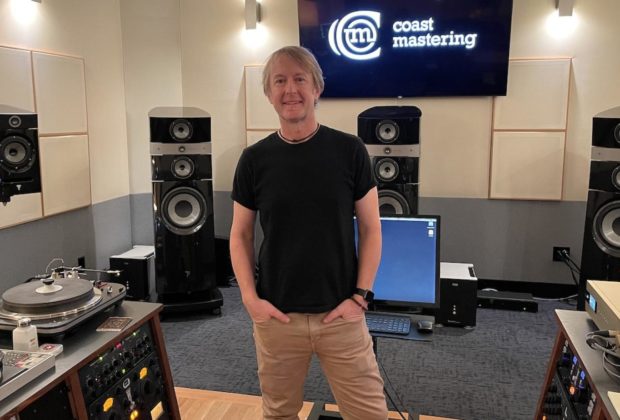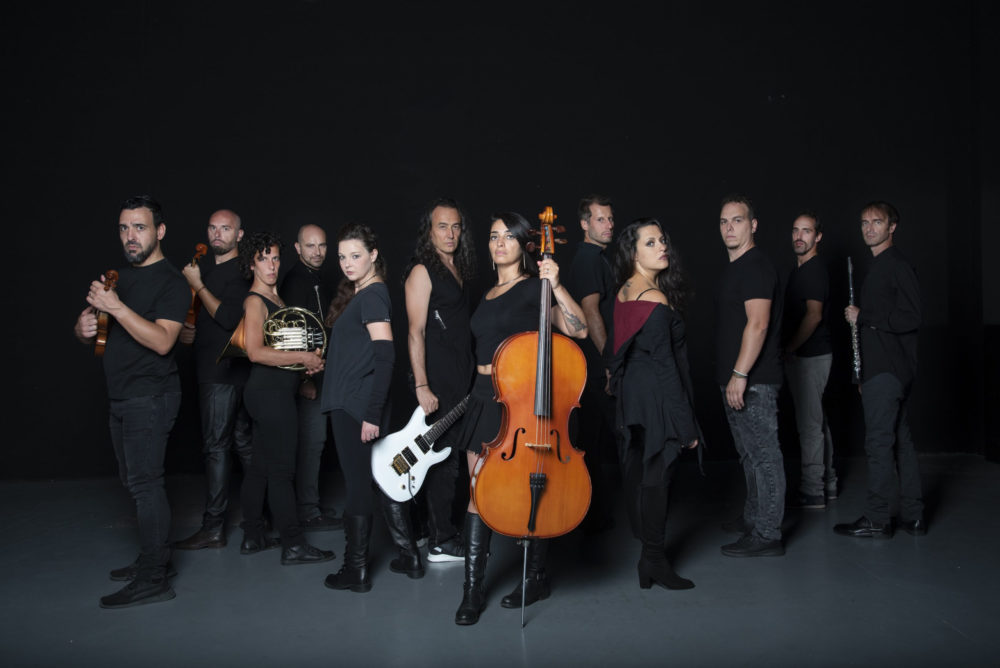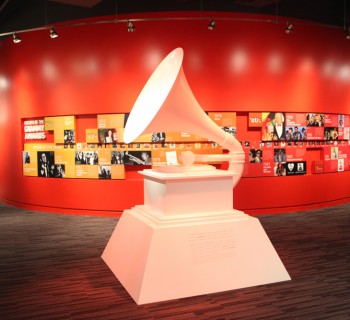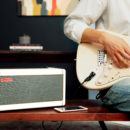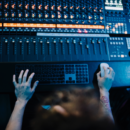When John Prine died due to COVID-19 complications this past April, a notable group of Recording Academy members quickly released its version of the revered songwriter's classic, "Angel From Montgomery," the following month, on May 22.
Led by Michael Romanowski, a GRAMMY-nominated mastering engineer and trustee of the Recording Academy's San Francisco chapter, the aim of the release was to honor Prine, with revenues from the song going directly to MusiCares' COVID-19 Relief Fund.
Nearly seven months later, Romanowski and his formidable team of collaborators, which includes Tammy Hurt, Eric Jarvis, Susan Marshall and Jeff Powell, among many others, re-released their version of "Angel From Montgomery" last week (Dec. 16). This time, it's mixed and mastered in Dolby Atmos.
One of the forerunners in the immersive sound space, Dolby Atmos takes the surround sound concept to the next level. Where surround sound focuses on the two-dimensional sound axes of the standard left and right and the additional front and back, Dolby Atmos adds a third axis: height.
A 30-year studio and sound veteran, Romanowski is a leader in mixing and mastering immersive audio. In fact, he had already mixed and mastered the recording of "Angel From Montgomery" in Dolby Atmos at the same time he did the conventional stereo mix.
Romanowski spoke to GRAMMY.com from the mixing and mastering hub of his Coast Mastering in Northern California about why "Angel From Montgomery" received the double mix and master treatment, what the differences are between a typical audio experience and one with Dolby Atmos, and how come we're hearing the immersive version so many months after the original MusiCares release.
What's the difference between Dolby Atmos and other iterations of immersive audio?
It started with quadraphonic sound [4.0 surround sound] in the '70s, which was an attempt to do multichannel with four corners with a phantom center image from the left and right and a phantom side image from the back and front. In the mid- to late-'80s, we got into 5.1 because of movies and games, and it took hold in music. In the '90s, we had Super-Audio CDs and DVD-Audio—competing formats, but same-sized discs. Ultimately, consumers just ended up listening to what was coming out of their computers. Now with Dolby Atmos, we've taken immersive audio a step further and added a height component, which is built on psychoacoustics and how the brain perceives localizations, frequency and height at different angles.
How does Dolby Atmos, which began in movie theaters, make the shift to consumer listening spaces?
It was originally geared toward the rake of the floor of the theater. Because the floor goes up, the back speakers are essentially the height speakers. That was a built-in feature—or a flaw, depending on how you want to look at it.
Moving to music, when consumers don't have the right floor, and they're sitting in their living rooms or cars or on headphones, we still want to give them that sense of what's in front of them and what's behind them. All the localization cues that give us direction that tell our brains that we are in a space are enhanced by having a more dedicated ceiling system array.
How does mixing and mastering in immersive audio lend itself to the consumer listening experience?
We're creating a sound stage and a place and an environment where the listener can feel like they're engaged in active listening versus passive listening. It's a way of having folks attentive to what they're hearing, to be present when listening to audio, rather than letting it be in the background or covering up kitchen noise when they're making dinner.
For a lot of folks, mastering has been relegated to finishing the mix. When we leave the stereo world and think about what immersive mastering is, you're adding not just two speakers, but 12 or 16 speakers. There are potential problems with translatability: phase problems, level problems, EQ problems, clashes, comb filtering, all sorts of stuff.
Do you have separate rooms at Coast Mastering for mixing and mastering in stereo versus in immersive audio?
Ninety percent of my work is in the stereo field, but we're starting to see overlap between the stereo component and the immersive component. The difference between a stereo speaker room setup and an immersive room setup is dimensionality. When you have a well-tuned stereo room, throwing speakers up can cause more problems like frequency response, reflections in the room and speakers' time arrival.
I engaged acoustician Bob Hodas, who has been working with me for just about every room I've ever been in. When we designed the room, we already knew what the dimensions were going to be, scientifically: the room reflections, calculations with absorption, diffusion, height, bass trapping. We worked all that out in advance to make sure this was an effective stereo room and also an immersive room.
Were your fellow musicians who worked on "Angel From Montgomery" aware of Dolby Atmos when you were working on the song?
No. At that point, the conversation was, "We don't know what that is, but sure, go ahead." It gave great perspective to not blend the contributions, but pull them apart so we could envelope the listener in a very cool way, a chance to create a 3D canvas and texture that pulls you in even further. When you listen to music in a club or go to a show, you're not just listening in stereo; you're listening to the environment, the reflections on the walls, the localization. This gave us a really great opportunity to do that with this track.
Do you see remixing and remastering in immersive audio as a way to update classic recordings?
My intent is not necessarily the reworking of back catalog. That's cool, but we're given a fixed perspective in the back catalog. For us in the Recording Academy, this particular project is a way to inspire people who are creating music moving forward to think about the possibilities of what they could do to create this listening experience for the consumer, the fan.
How does mixing and mastering in immersive audio have an effect on what's heard through streaming services, which generally have lower-quality audio?
If the consumer is playing it back with slow bandwidth, it's more important for them to hear something immediately than to wait a few seconds to allow it to play. In this instant-gratification world, you hit play, it's buffering and you have to wait five seconds or two seconds, you're already gone. Some companies send small data first to get you in and stay while buffering the high-resolution stuff.
This is something that is greatly expanded on by multichannel. If you've got 12 channels of audio, the encoding process becomes very particular. This goes back to mastering. By using multichannel audio, we deliver multiple versions of encoding layers of complexity and resolution, so there [are] less differences between the smaller low-resolution and larger high-resolution files.
Is this one of the main benefits of mixing and mastering in immersive audio?
Having a great mix and a great master is hugely important for lots of reasons, among them: future aspects of recordings. We got into the digital world at 16-bit/44.1 kHz recording, then we moved to 24-bit/48 kHz. As technology allowed us to get higher resolution, musicians that had recorded in 16-bit/44.1 kHz were locked into that. As technology and digital distribution evolve and resolution gets higher, you will always be limited to the top of what you got. You can't make it more resolute than it is.
At the moment, Dolby Atmos is limited to 24-bit/48kHz. Most people are recording at higher resolution than that. I recorded "Angel From Montgomery" at 24-bit/192 kHz. We're locked in at 48K for now, but that doesn't mean that I'm not prepared for when we go higher.
Will a non-audiophile consumer be able to notice the difference between the stereo version and the Dolby Atmos version of "Angel From Montgomery?"
When you listen to "Angel From Montgomery" in the stereo world, the phantom center image is right in the middle of your head. In the immersive world, we're trying to engage the listener in a sense of space. The music and the musicians are coming from all directions, rather than [from] two speakers in front of you. Stereo music can't recreate the same sense of environment. With "Angel From Montgomery" in Dolby Atmos, and the collaborative nature of the recording, we could better highlight each part that is additive to the bigger picture, rather than squeezing it down into two channels. This gives the listener a more active and engaging experience.
What I would recommend to folks is [to] take the time, sit and listen to things; absorb it rather than judge it or compare it. Obviously, people are spending a lot of time listening on headphones. The best ear training anybody can have is to sit and listen with other people and talk about what they're hearing. That shared experience causes people's attention to hear things they wouldn't necessarily think about or listen to.
Why are you releasing the Dolby Atmos version of "Angel From Montgomery" at a different time than the stereo version?
We thought that if we put it out at the same time, the message would get muddied. On Amazon, you'd see two versions and it would confuse people. The stereo release was to get it out there to do as much good as we could from the start. Holding the Dolby Atmos release gives us an opportunity to revisit it, to draw attention back to the good the song can do, but also, the possibility of imagining the release in a different way and how that can inspire folks.
What is your ultimate goal with what you're doing with immersive audio?
My hope is we'll get to a distribution model other than streaming, like HDtracks or Blue Coast Music that sell high-resolution multichannel audio where people are putting their own servers together. We're going to get to where people are going to have that ability without limiting what they're doing now for convenience. Don't lock yourself down with resolution, distribution and download possibilities. Go as high as you can because, as we have demonstrated for 100-plus years, the audio industry will be moving forward.

